Stops: SWP Eco-Lodge, Sri Dalada Maligawa (Temple of the Tooth) (Days 65-66)
The train from Colombo took us through flooded fields and villages and then up and up and up into the central highlands and back into history. Kandy has its fair share of colonial residences, hotels, and churches. But it also has extraordinary nature surrounding and intertwined with the city. Most of all, it has pre-colonial history as the center of Buddhism in Sri Lanka. Though Buddhism declined at times, there is a long and still very much alive continuous tradition here. The Temple of the Tooth is the center of the city and the center of worship for the country.
We hopped in a tuk-tuk on arrival at the station for a short ride to our hotel. Good thing we got a ride, because the hills do not just surround the city, they are the city. As we approached, Etsuko and I turned to each other and both said, “He’s not really going to drive up there is he?” The drive to the SWP Eco-Lodge was so steep I thought for sure our three-wheeler would keel over backwards. Nope. Tuk-tuks can go anywhere and carry anything if the driver is skilled enough.
The Lodge was perfect. A short walk from the shops, markets, and museums, but quiet and surrounded with greenery. We were cautioned at check in to keep the doors and windows closed and leave nothing on the balcony or else we would have monkeys as visitors. I’m kind of used to that, but the monkeys in Okutama are scared of me. These are city monkeys. I think we had the nicest of the six rooms in the hotel with a clear view of the lake and the temple. Breakfasts just below in the open air overlooking the town and the lake were wonderful, too. Very calming and relaxing after the hustle of Colombo.
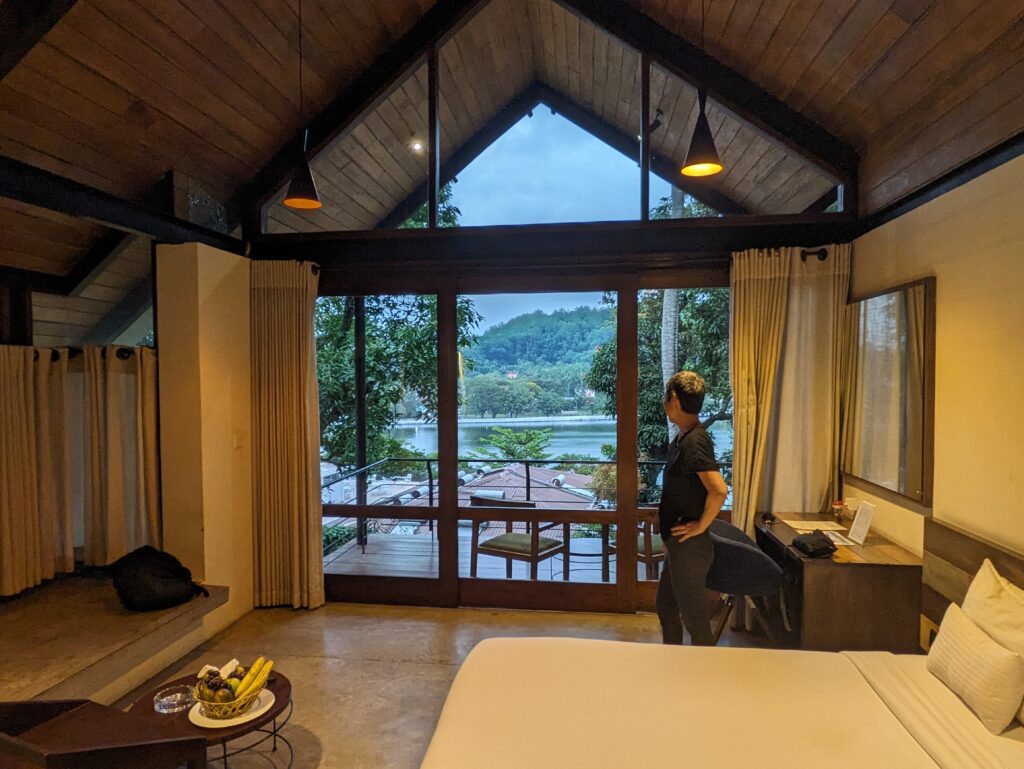
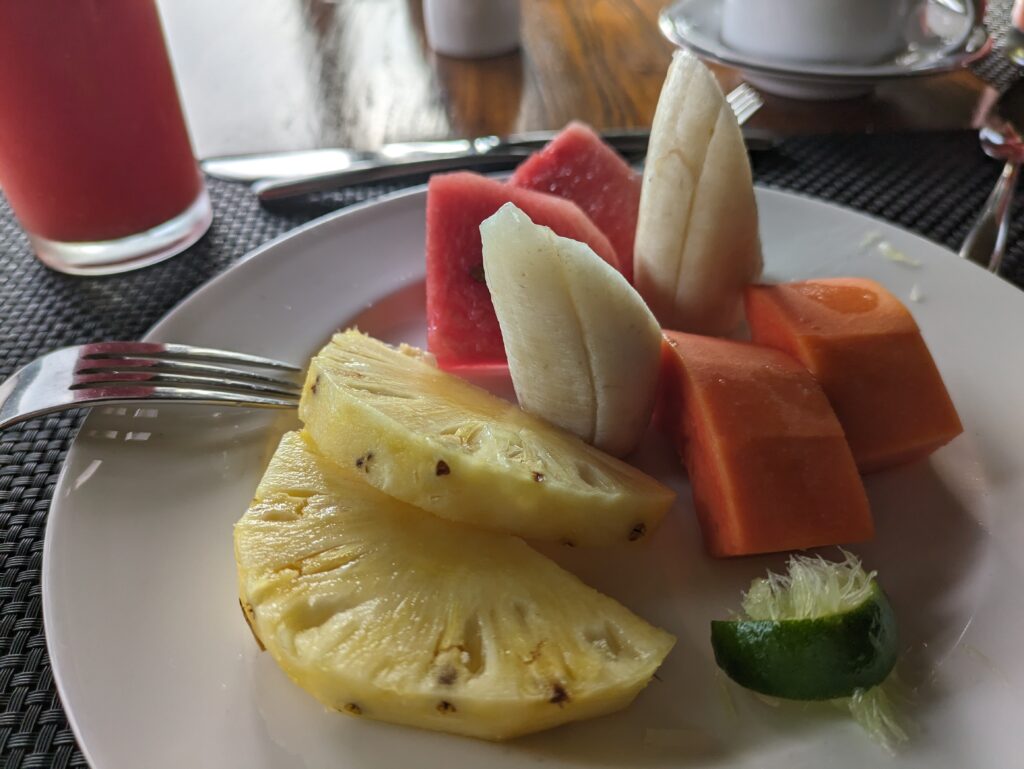
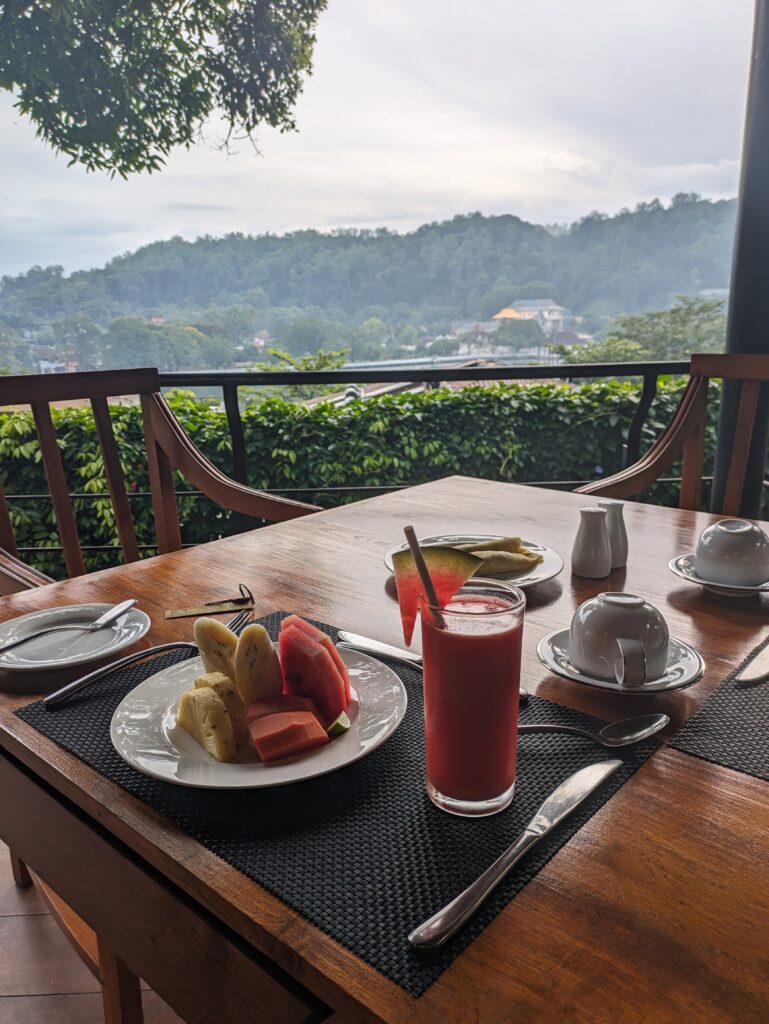
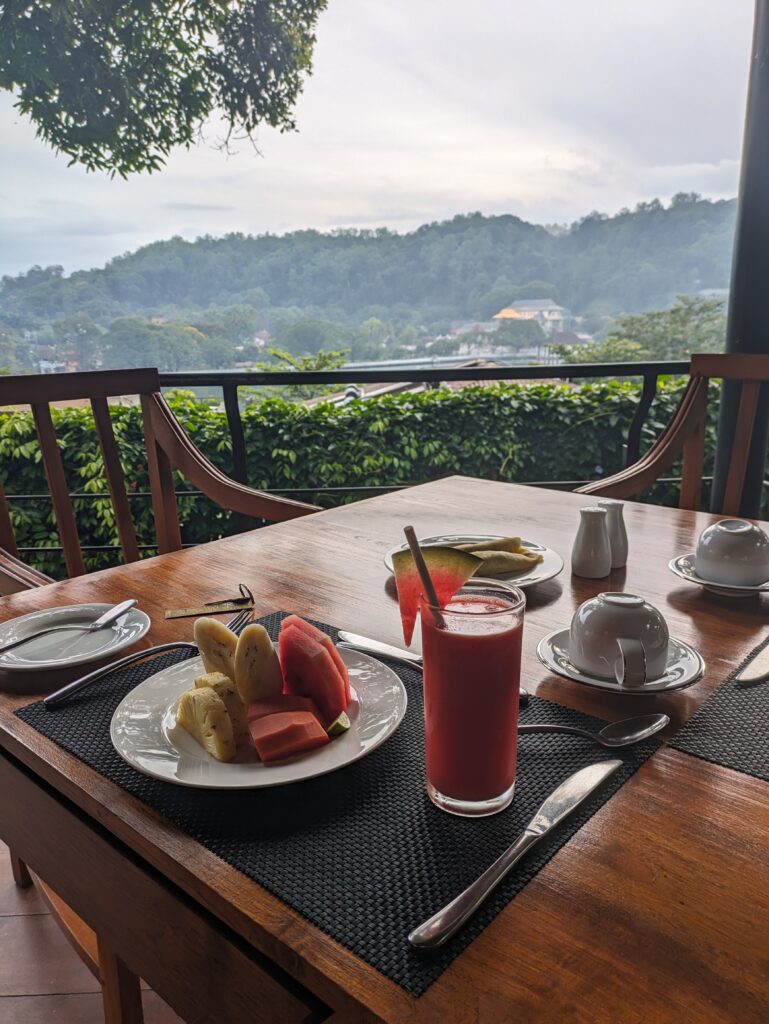
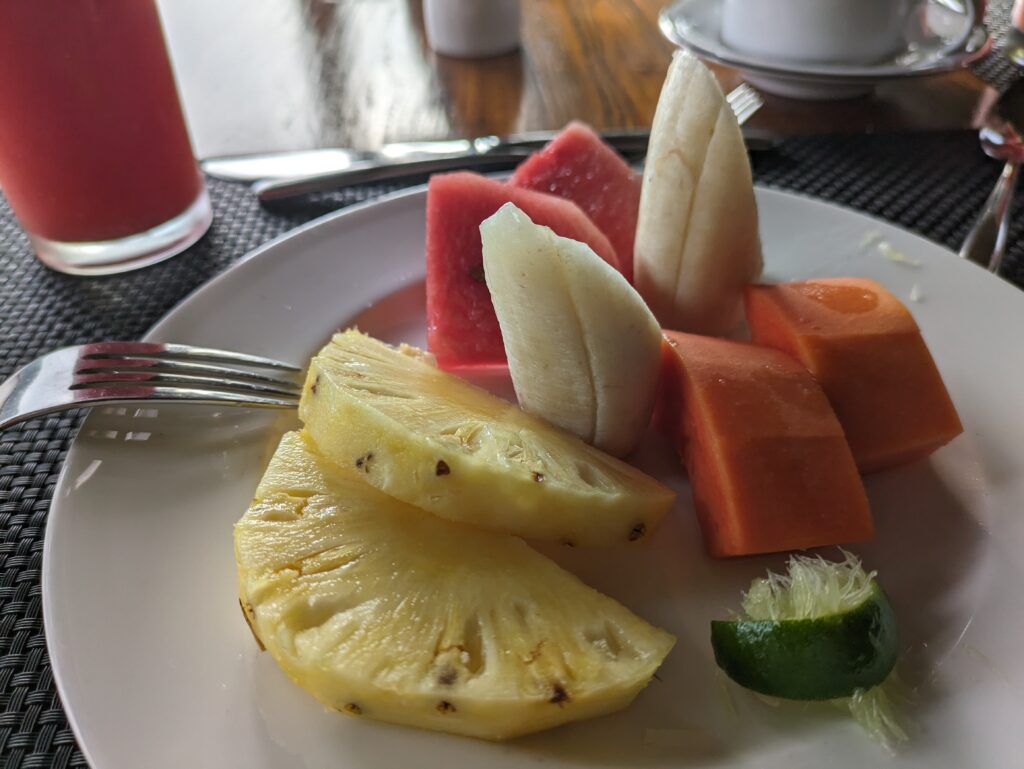
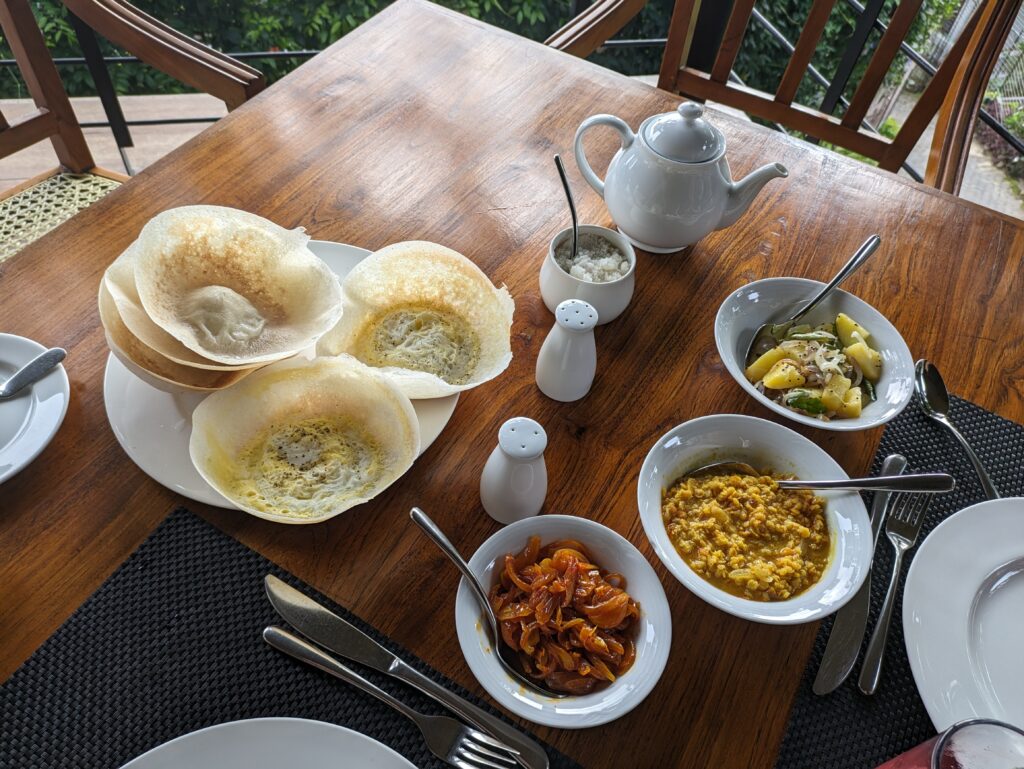
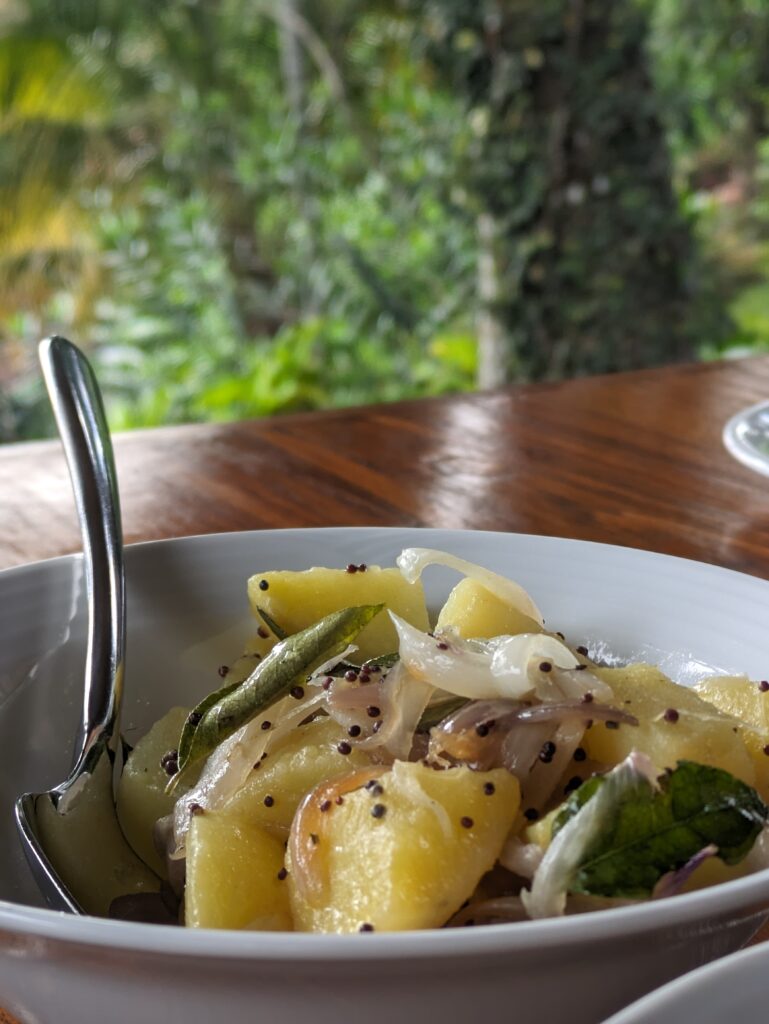
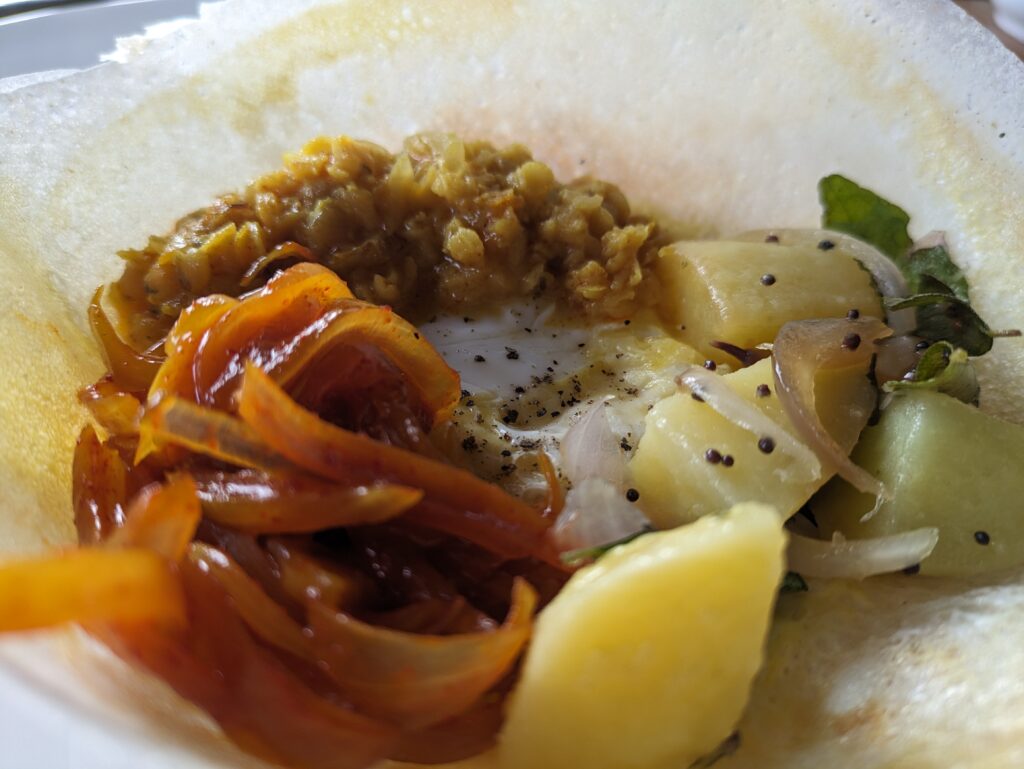
Brekkies.
The next day we went to the Pooja Ceremony at the Temple of the Tooth. The ceremony is held three times a day to accommodate all of the worshipers who wish to attend. And, it is still packed. We got there in time to attend the full ceremony starting at 9:30 which went for about an hour-and-a-half or so. I did not take any photographs during the ritual. It seemed a bit disrespectful and it was better to just be present for what was happening. The grounds around the Temple are wonderful and there is a whole complex of adjacent buildings such as the Museum of the History of Buddhism and the National Museum nearby.
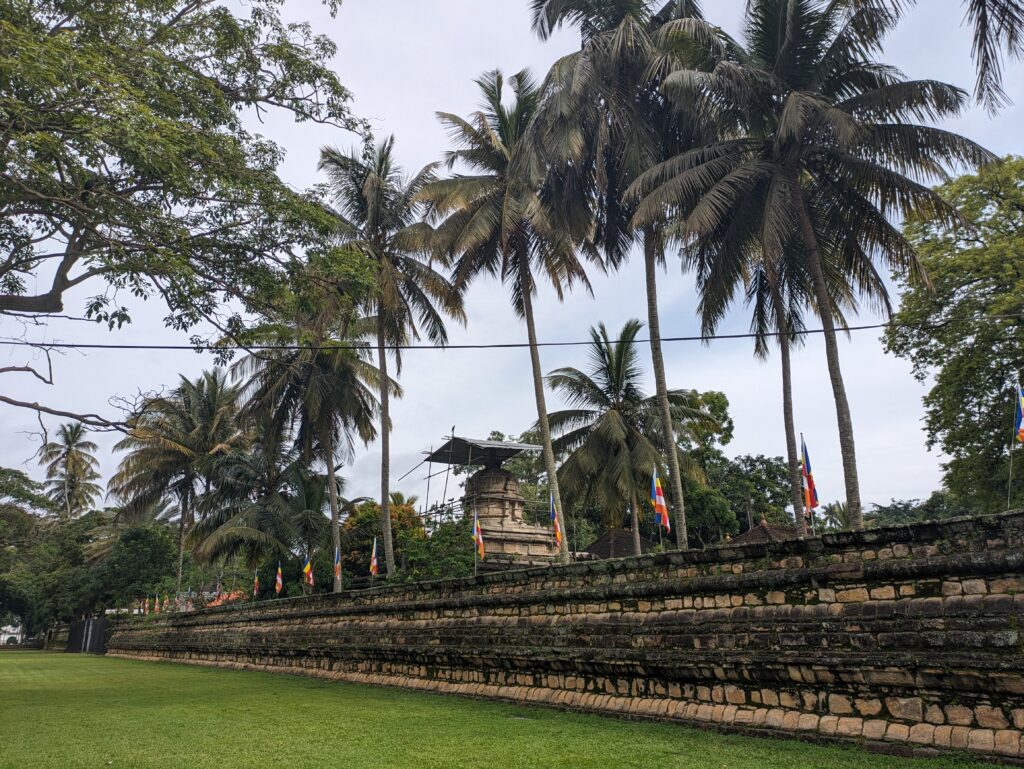
Approaching the Temple.
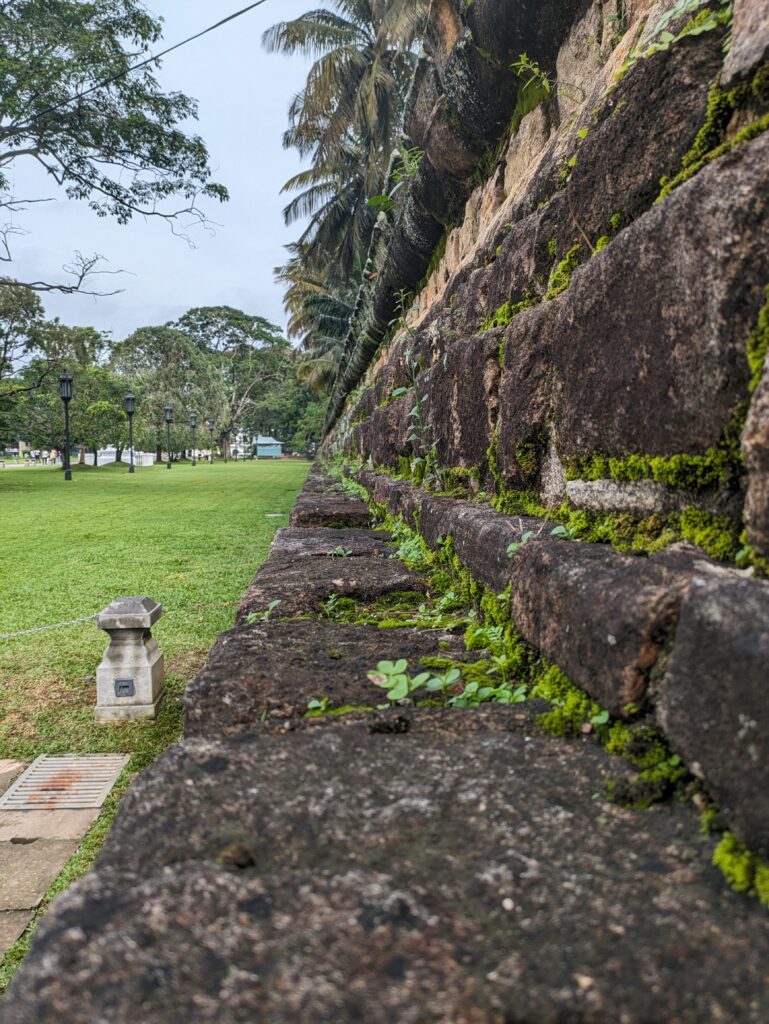
Mossy stone walls everywhere.
Worshipers and attendees enter the ornate Temple precinct and follow a route up the stairs to a long altar where they present offerings. These are mostly an array of tropical flowers sold at stalls nearby, but can also be food offerings from small snacks to large packaged meals for the priests. A long, broad hallway faces this altar and many people sit and pray here. We sat for a while observing the parade of people of all sorts coming to receive blessings. There was a long line which kept getting longer. Most people patiently wait their turns, even quite elderly visitors who needed help to labor up the stairs. Small children wander around. Once in a while an “important person” would cut the line, but mostly everyone was very calm and reverent.
In the background, several drummers are playing loud, strong polyrhythms. A musician sounds a conch every so often. A very loud kind of oboe with a brass bell for amplification punctuates the drumming. The musicians are working very hard and some wearing ornate vestments.
We worked our way back downstairs and stood with the crowd near the entrance to the inner sanctum of the original temple which this “newer” enclosure was built around. The music increased and the players processed around the inner temple at times, carrying Buddhist flags and waving incense. Smelled like church when I was a kid.
Finally the priests enter and open the inner doors briefly. You get just a glimpse, just enough to get an impression of ornate gold interior with ivory, statues, and vessels, but the inner room is sealed again. Next the many flowers from previous pooja are brought in and the doors closed again. The musicians pick up the vigor and pace and process around again. Worshipers dressed in white (mostly) form lines all up and down the sides leading to a pedestal outside the sanctum. Finally, priests process out and the hard work of carrying out giant urns to the pedestal begins. Each urn is filled with a purplish liquid made from the previous flowers. Congregants present a bottle and get a ladle full (or more) of this blessed water. They also dab a bit onto their hair.
The jars or bottles are all shapes and sizes, but simple. On old Marmite jar, an empty coke bottle, maybe a larger tupperware if you really wanted a lot, instant coffee jars or sippy cups. Though the people are from all walks of life, there is no showiness or ostentation. Nobody presents a gilded urn or crystal carafe. Just cheap glass or plastic–everyone the same. One young woman offered to share with us, but it obviously meant more to her than to us. Very kind and generous though. After people began to leave, a few people would approach the pedestal and wipe up a bit of spilled holy water to apply to their heads. We did the same. A shame to let it go to waste. It seemed to work. We stayed healthy the rest of the trip.
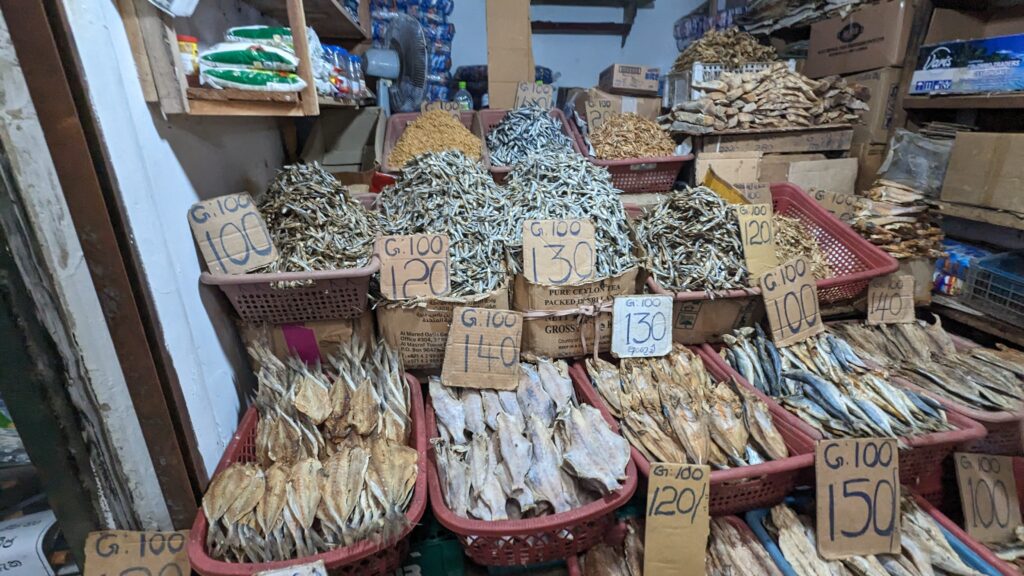
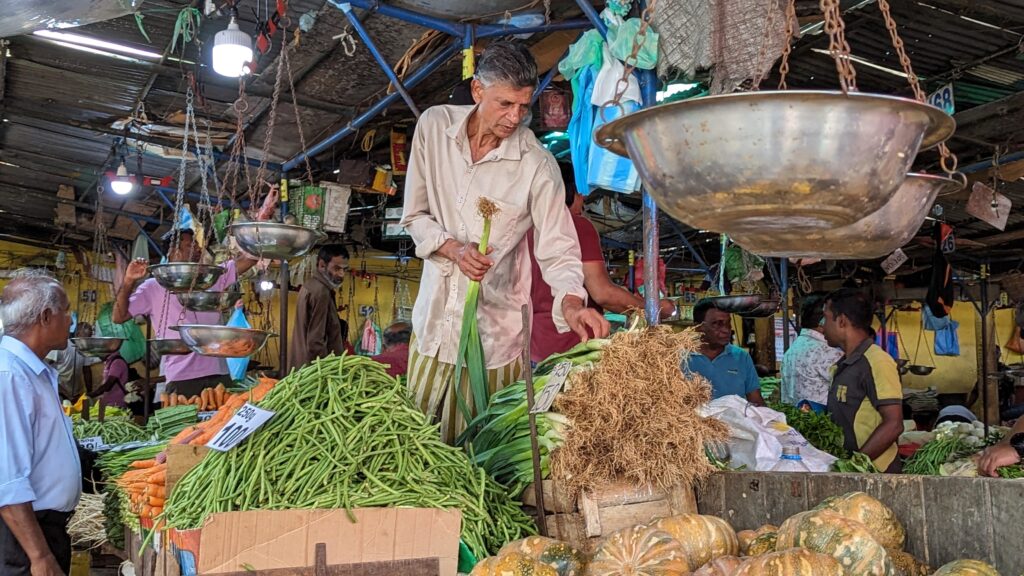
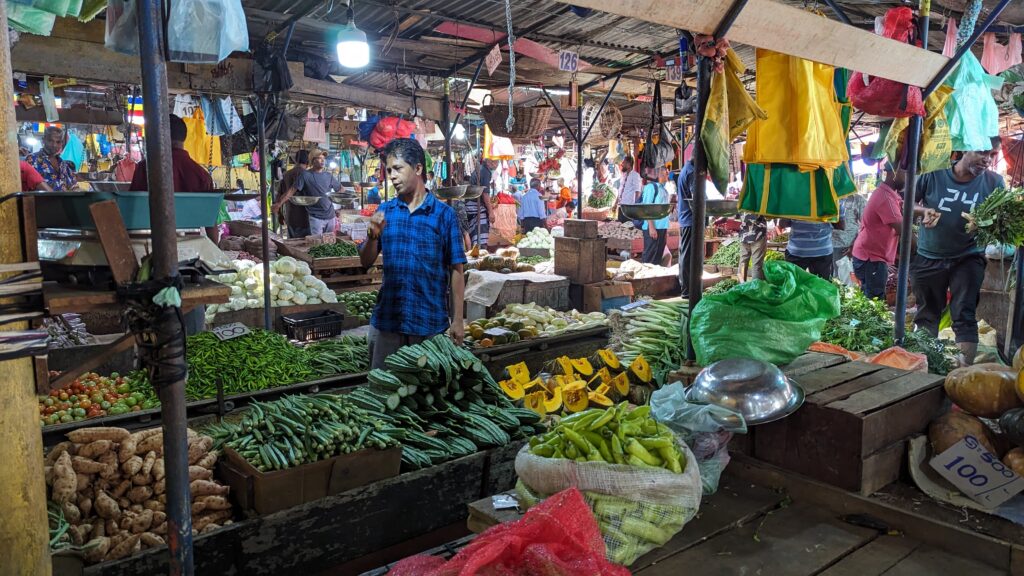
At the market. Right click to expand images.
We spent the rest of the day and evening exploring the city a bit including the museums, but mostly the markets and shop-lined streets. And, prepared for our next major expedition….
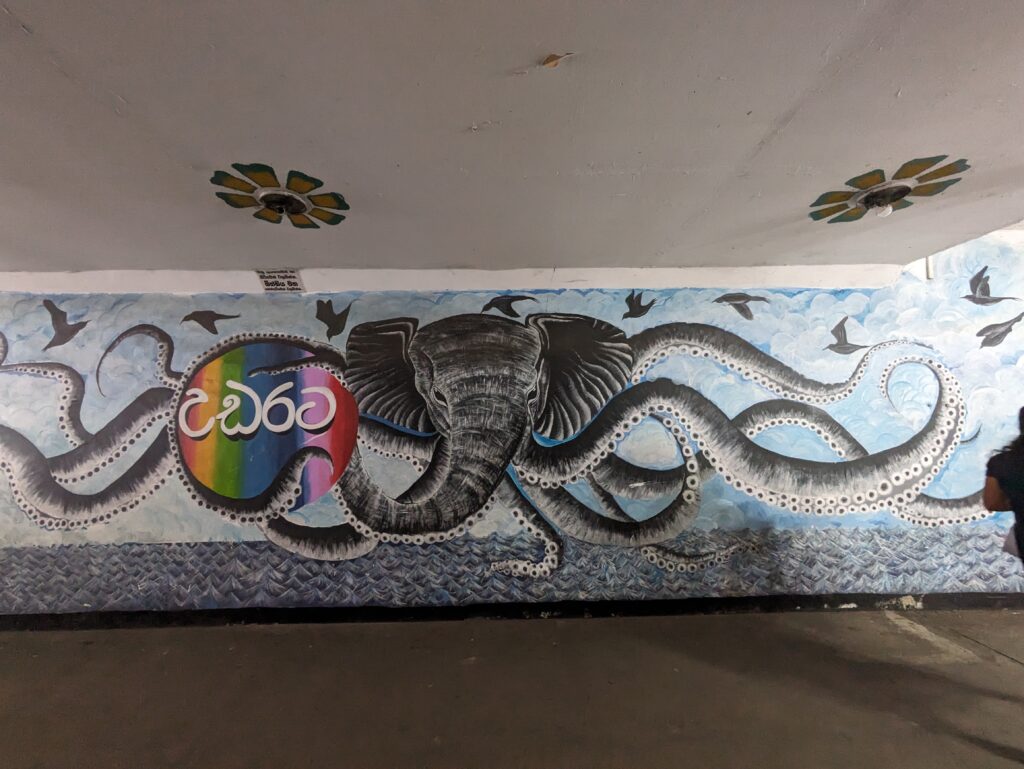
I liked this tentacular elephant in a pedestrian underpass.
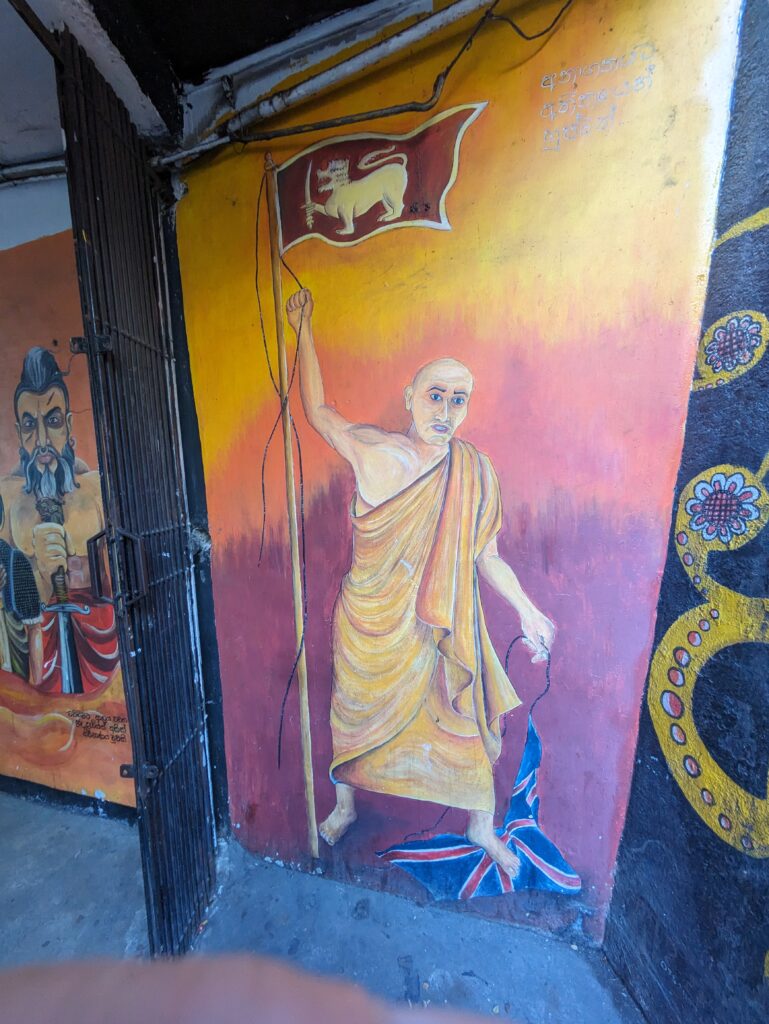
There is a lot of very nationalist street art in Kandy and in Sri Lanka in general.
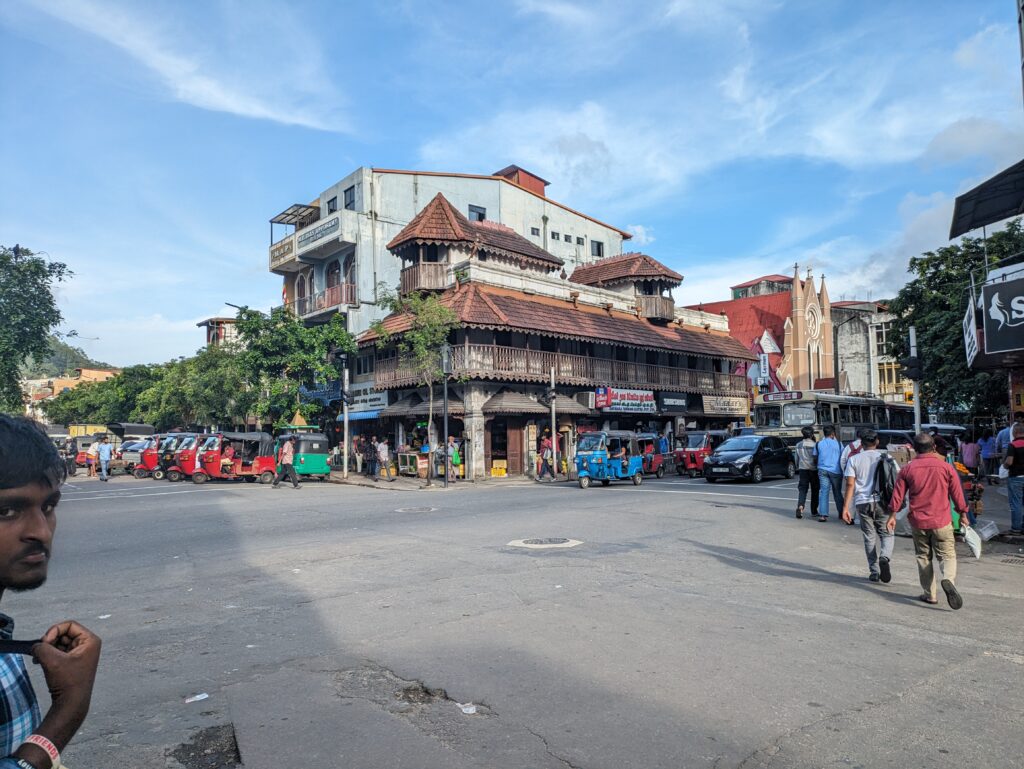
Street scene near the main shopping street in Kandy.
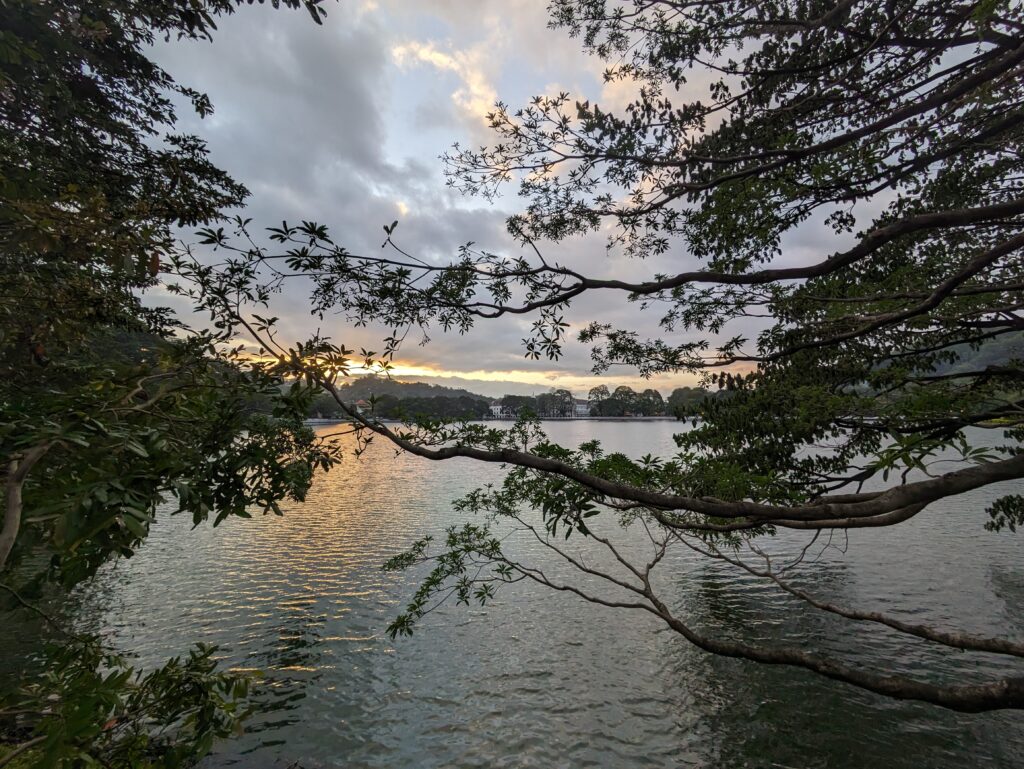
Enjoying a cool, peaceful walk around the lake in the evening surrounded by birds.

EBE
T O'Neill